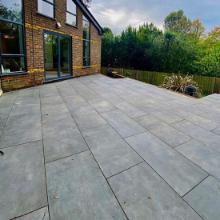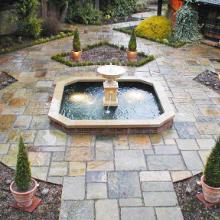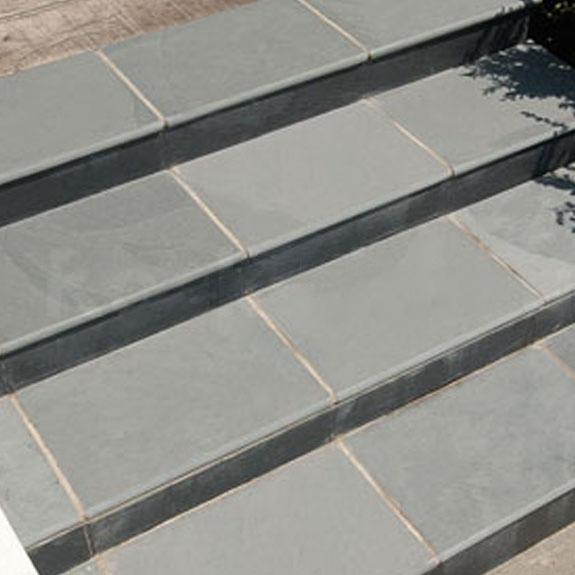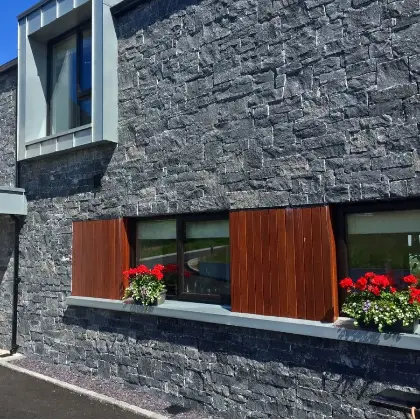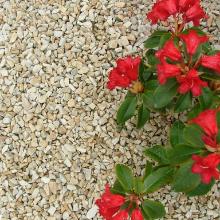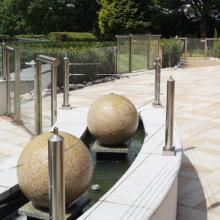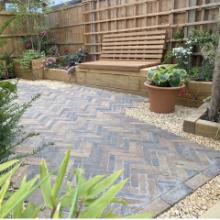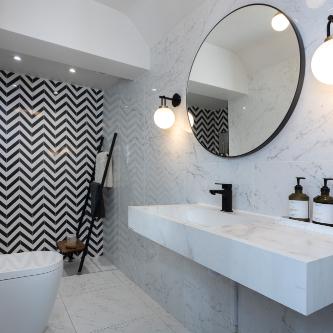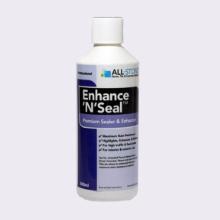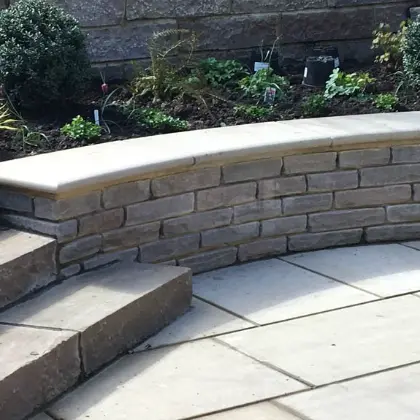Outdoor Porcelain Paving Buyer's Guide
When choosing external porcelain, there are several factors to consider to ensure that you select the right type of porcelain for your needs. Here are some key considerations:
Durability:Look for porcelain that is specifically designed for outdoor use and is resistant to weathering, fading, and staining. This will ensure that your porcelain will be able to withstand the elements and maintain its appearance over time. Most outdoor porcelain is 20mm thick but the are also some 9mm thick ranges that are suitable. These are also available as a 3+1 product which has a 1 cm (or 9mm) porcelain tile backed with 3cm of a porous single size 'popcorn' cement aggregate.
Slip resistance: If you plan to use porcelain for walkways, patios, or other outdoor areas where people will be walking, it's important to choose a type of porcelain that has a slip-resistant surface to reduce the risk of slips and falls. Outdoor surface should be R11 or better. These are high traction surfaces that have the feel of medium fine sandpaper.
Size and shape: Consider the size and shape of the porcelain tiles you plan to use. Larger tiles can make a space feel more open, while smaller tiles can add texture and interest. Size available are generally nominal sizes that include the normal 5-6mm tile spacing and so a 600x600mm tile is actually 595mm x 595mm in size. Typical nominal sizes are 600x600, 600x900, 450x900, 900x900, 600x1200, and 1200x1200mm.
Colour and style: Porcelain comes in a variety of colours and styles, polished concrete, stone effect (quartzite, Limestone, Granite), and wood effect are all available and are often, in a quality tile, indistinguishable from the material that they are modelled on.
Indoor-outdoor living: continuity from indoor to outdoors can be easily achieved with porcelain. Altas Concorde porcelain tiles are available in the same ranges for both indoor and outdoor use. The indoor tiles have surface finishes suitable for indoor use and, similarly, the outdoor tiles have outdoor finishes. Using the same size tiles or otherwise continuing tile grout lines from inside to outside is a great way to connect indoor and outdoor areas. Texture is also important in this regard. Often colour is less important because of the differences in indoor and outdoor lighting levels but nevertheless colours should be drawn from the same range or palette.
Installation: Finally, consider the installation process for the porcelain. 20mm porcelain is most often laid in a sand cement mortar mix. The finished surface is typically +/- 70mm above suitable compacted sub-base. Raised pedestal and aluminium decking options also exist for roof terraces, balconies and, increasingly, patios. 9mm thick 'grip' surface tiles can be laid outdoors in which case it is recommended to use suitable adhesives and decoupling membranes.
Environmental considerations. Porcelain production uses large gas fired furnaces and so porcelain production has a climate change impact. In addition porcelain prices fluctuate with gas prices. Atlas Concorde is the first in the world to break this model and build a completely solar powered, and therefore fully fossil fuel free and CO2 emission free, tile manufacturing facility in Italy.
By considering these factors, you can choose the right external porcelain for your needs and create an outdoor space that is both beautiful and functional -and the best choice for the Planet.
